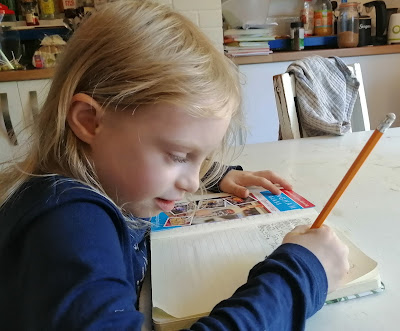Teach in life as well as in classrooms
Raising awareness of the Earth's preservation is a pivotal topic to teach your children and its one which I've found incredibly easy to address with the children.
Initially we consistently enforced that the children tidy up after themselves inside the house. They have had a role to play in this area from the age of two. They are encouraged to not litter inside the home, throwing rubbish or wrappers on the floor is not acceptable. They are told to find a bin quick march. Now this lesson is continually in progress, they do need frequent reminding. Ironically they're quick enough to remind each other over the rule than follow it themselves.
This lesson has been extended to outside the walls of the house, on a picnic or having a snack whilst going on a walk, they are taught and reminded to take their rubbish with them until a bin is present. They are far better at this and are very conscious not to harm the animals.
Xander will take it upon himself to pick up descarded recycling when we are visiting the local playgrounds and goes back and forth to the bin tidying.... To the point I think we need to buy a rubbish grab stick for him.
I'm sorry but if a toddler who is recovering from chemo and radiation can care enough about his world and environment to tidy up other people's rubbish, then surely every capable adult and child can do the same.
The next step in the lesson was broached when the children learnt to help me with little chores around the house. They noticed the different bins in the kitchen and the organisation of the bins outside and asked questions. Lessons on materials, properties and recycling followed. They now voluntarily empty out the recycling bin in the kitchen out to the wheely bin outside whenever they have garden time.
Their curiosity and interest in the topic led me to expand the lesson further. They know about the ozone layer (or the protective shield and suncream for the earth, as they call it). They understand the basics of this topic, how its wearing thinner and we need to help protect it, so the Earth doesn't become too hot.
The lesson then developed to include climate change and the affects on animals and their habitats, discussing the extinction of the dinosaurs and adaptation which needs to take place through evolution.
Lockdown proved the perfect time to show how humans can easily damage the earth and distroy species and habitats due to our habits and lifestyle. They were fascinated to see the nesting beaches for turtles being used again for their original purpose due to the change in society's actions. They clapped when I told them that the rest from the planes in the sky and the cars on the road actually helped nature to recover a tiny bit and take a breath for a little while.
The final question they asked, is how can they help the suncream stay thick so the Earth doesn't get sunburned and the polar bears don't lose their habitat.
They learnt about the tiny things we can do, turning off lights, using less energy...they became convinced that tidying their toys could help in the endeavor. They learnt about clean energy sources and fossil fuels, how they play a part in this narrative.
They are 4-6 years old. They have been learning this subject since they were two years old. They are not scared or worrying about the plight of the earth. They made sense of the problem and they play their tiny part in helping.
My point here is, don't wait until these topics are raised in a classroom as part of a curriculum which is leading to an exam. In this scenario the topic remains just that....a topic on paper which needs to be studied in order to gain a grade.
I've taught these topics organically in life, raising awareness from an early age before bad habits have time to take route. It is very easy to raise awareness of these topics at home.




Comments
Post a Comment